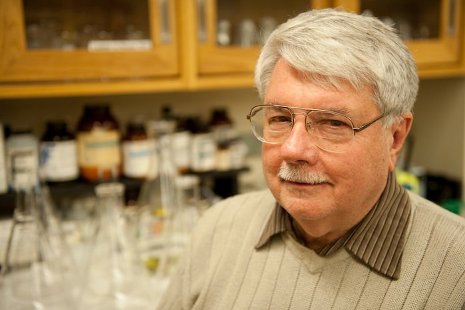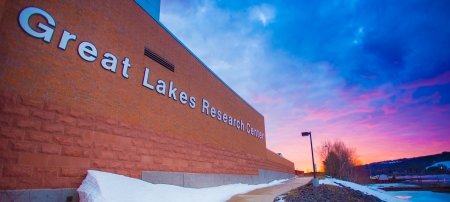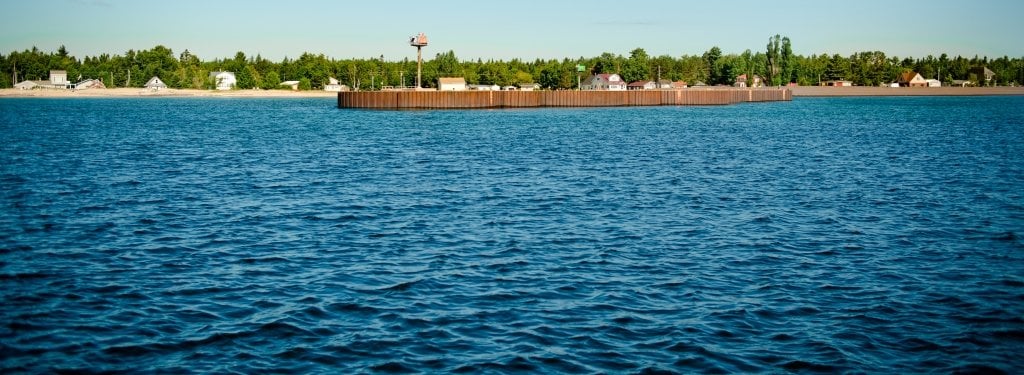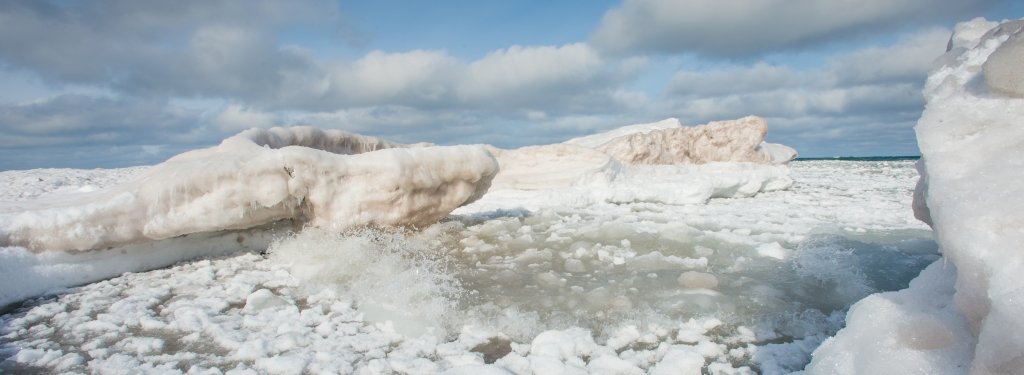Kerfoot to Receive 2013 Research Award

Professor W. Charles Kerfoot’s insatiable curiosity and enthusiasm for discovery have propelled him into all corners of his discipline and well beyond the confines of Michigan Technological University. For both the breadth and depth of his contributions to limnology, he will receive the University’s 2013 Research Award.
Kerfoot came to Michigan Tech in 1989 from the University of Michigan, joining the biological sciences faculty and serving as an adjunct professor of geology. He is also director of the Lake Superior Ecosystem Research Center.
“He has brought tens of millions of dollars in external funding to Michigan Tech, including participation in two of the largest Great Lakes research projects to date,” wrote Chandrashekhar Joshi, interim chair of biological sciences, in nominating Kerfoot for the award. In addition, Joshi noted, Kerfoot and the late C. Robert Baillod wrote the proposal that precipitated funding for the $25 million Great Lakes Research Center.
“I don’t think you could have picked a more deserving candidate for the award,” said Norman Yan of York University. “Charlie is considered an international star in the field of freshwater zooplankton ecology.”
His two books and dozens of publications speak to Kerfoot’s productivity and the quality of his research, Yan said. “The breadth of Charlie’s work is also enormous,” he wrote. “He is a limnologist in the broadest sense of the word, implying that he has had to master physical, chemical and ecological principles to understand the lakes he studies.”
Howard Riessen of the State University of New York at Buffalo also spoke to the impact of Kerfoot’s work. “During his career, he has made major contributions to the fields of evolutionary ecology, community ecology, paleoecology and ecosystem ecology,” Riessen wrote in support of Kerfoot’s nomination. “His work has involved ecological interactions in small lakes, large lakes and the Great Lakes.” Kerfoot was also at the genesis of the new field of resurrection ecology and has made important contributions to food web theory, he said.
Winfried Lampert of the Max Planck Institute for Evolutionary Biology cited the 1978 Symposium on Evolution and Ecology of Zooplankton Communities, which Kerfoot organized, as “a turning point in freshwater ecology.” A few years later, his theory that zooplankton move up and down the water column to escape predators settled a long dispute and is now “textbook stuff,” Lampert said.
Furthermore, Kerfoot was the first researcher to recognize the potential in hatching eggs of zooplankton that had been dormant for decades in sediment layers. “He coined the term ‘resurrection ecology,’ and no other concept has been used so extensively in plankton ecology and evolution during the first decade of the present century,” Lampert said.
Mary Power of the University of California, Berkeley, praised Kerfoot for his interdisciplinary research. She noted that he integrated limnology and the natural history and ecology of plankton in his research documenting the disappearance of the “doughnut” in southern Lake Michigan. He also predicted that, as quagga mussels consume the gyre of plankton, zooplankton and fish species would be threatened.
“Dr. Kerfoot combines meticulous taxonomic, experimental lab and field work, large environmental visualization and vision, and excellent scholarship” to address society’s urgent problems, Power wrote.
Kerfoot has always taken the broad view. As an undergraduate at the University of Kansas, he majored in both geology and zoology. After earning a PhD in Zoology from the University of Michigan, he held appointments at the University of Washington, Dartmouth, Cornell and U of M before coming to Michigan Tech in 1991.
“Since coming here, I’ve done much more than I could have elsewhere,” he said. In particular, Michigan Tech’s location on the Great Lakes has been an asset. He was a participant in two of the largest freshwater grants ever awarded, the KITES (Keweenaw Interdisciplinary Transport Experiment in Superior) and EEGLE (Episodic Events–Great Lakes Experiment), which totaled more than $20 million.
Both projects drew researchers in from several universities and government agencies. “I’ve always tried with my research to go outside the University and connect with other programs,” he said. “It makes you more competitive. I always advise my grad students to get out as much as you can.”
As for being selected to receive the Research Award, Kerfoot said, “It feels good to be recognized. There are many people here doing wonderful work, so it’s truly an honor to be chosen.”
York University’s Norman Yan thinks Michigan Tech was wise to honor a plankton expert. “Quite simply, we would be hungry, dim-witted and likely dead without the services that plankton provide,” he said. “We need plankton for our survival, and we need researchers like Charlie to ensure that we understand and manage the threats to the health, diversity and functioning of plankton communities.”
Michigan Technological University is an R1 public research university founded in 1885 in Houghton, and is home to nearly 7,500 students from more than 60 countries around the world. Consistently ranked among the best universities in the country for return on investment, Michigan's flagship technological university offers more than 185 undergraduate and graduate degree programs in science and technology, engineering, computing, forestry, business, health professions, humanities, mathematics, social sciences, and the arts. The rural campus is situated just miles from Lake Superior in Michigan's Upper Peninsula, offering year-round opportunities for outdoor adventure.




Comments